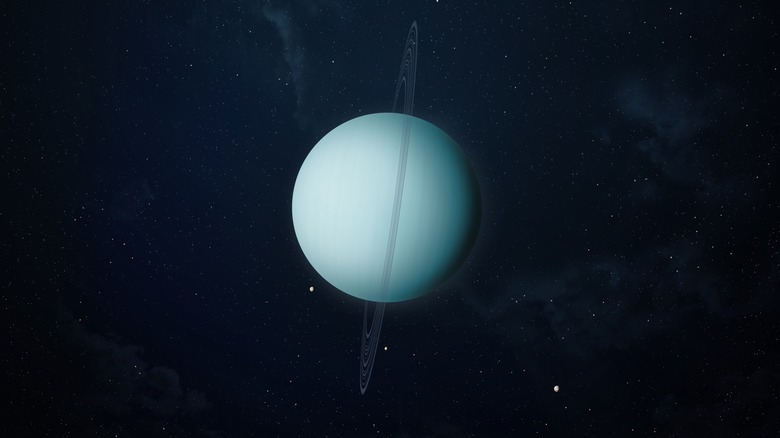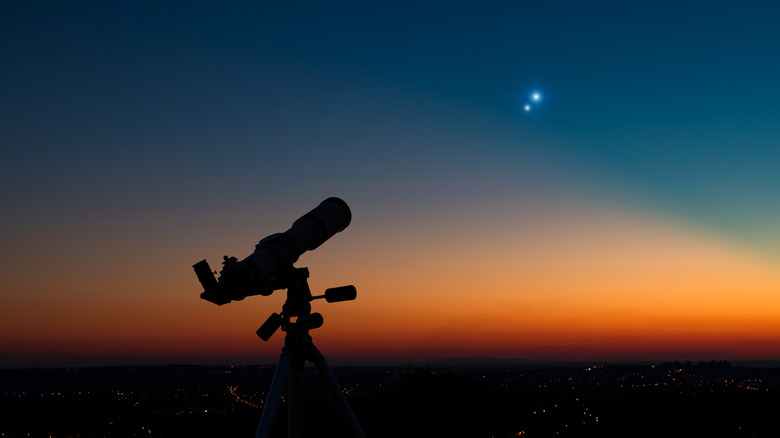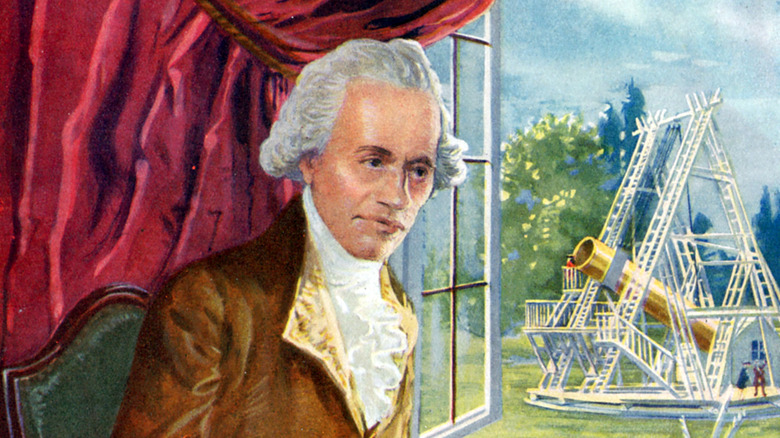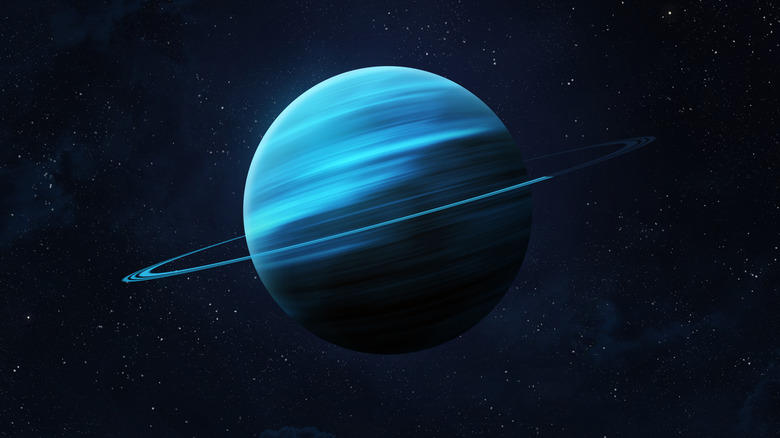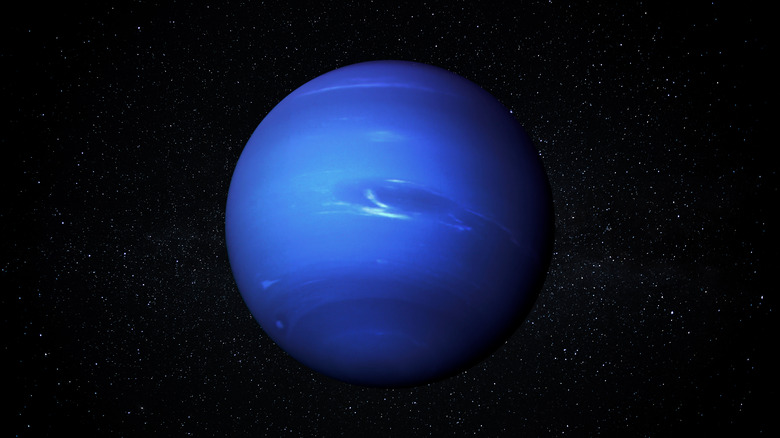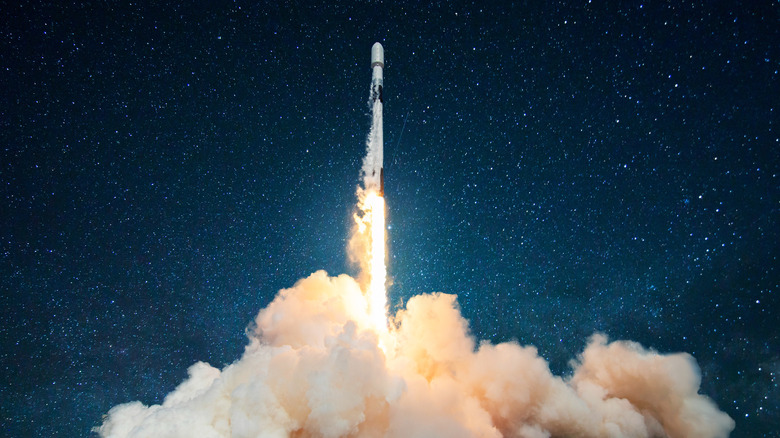The Surprising History Of How Uranus Was Discovered
Uranus is the seventh planet in our solar system. As the planet with the third largest diameter, it is four times wider than Earth. Uranus is a type of planet known as a gas giant (via NASA). These planets – Jupiter, Saturn, Uranus, and Neptune — do not have a rocky surface like Earth and are instead comprised of a thick atmosphere full of gases. These gases can lead to some pretty cool effects (think of the swirling clouds on Jupiter), but make these planets essentially uninhabitable (via the University of Colorado at Boulder).
Because Uranus is one of the furthest planets from Earth, at just under 2 billion miles from the sun, seeing it in the night sky is difficult. The only way to view this planet is to look through a telescope. Because it appears so small from Earth, even in a telescope, it took around 170 years after the telescope was invented before Uranus was finally spotted (via the Royal Museums Greenwich).
Uranus was the first planet found with a telescope
Because Uranus is so far away, it appears very small in the night sky, even when looking through a telescope. The first astronomers who saw the planet originally misclassified it as a star because of its dim and small appearance. In 1781, astronomer William Herschel, credited with Uranus' discovery, realized it wasn't a star after realizing it had moved positions after a few days. But he, like other astronomers, also misclassified it at first. Herschel originally mistook Uranus for a comet, knowing that it could not be a star due to its movement, but not expecting to find another planet.
Further investigation later revealed Uranus' planet status, making Uranus the first planet discovered with a telescope. Technically, Uranus was the first planet ever "discovered" at all, as Mercury, Venus, Mars, Jupiter, and Saturn are all visible with the naked eye. These planets have been known as something other than stars since humanity began looking at the sky. Uranus was the first discovery of a planet that wasn't visible to the unaided eye (via the Science Museum).
Astronomers didn't know it was a planet until two years later
It took two years after William Herschel's discovery for astronomers to realize that Uranus was a planet. This was partially thanks to another astronomer, Johann Elert Bode, who made many observations of Herschel's new "comet." Herschel tried, unsuccessfully, to name the new planet Georgium Sidus, after the current king of England, King George III. This didn't stick in the scientific community, who decided on Uranus, suggested by Bode (via NASA).
Herschel quickly became a celebrity for his discovery, and was given an award by King George III, who was excited about the new planet bearing his name. Other astronomers outside of England didn't appreciate this, causing Bode's suggested name to quickly take over (via the Science Museum). The British resisted this, and didn't change its name on official documents until the mid-1800s, well after King George III's death in 1820 (via Royal UK).
Uranus has some pretty strange features
Uranus is a unique planet with some strange features. This planet has a fast rotation, making a day just 17 hours, but has a long orbit that takes 84 Earth years. This cold and windy planet has a tilt so severe that it appears to spin on its side, causing it to appear to orbit the sun like a spinning ball rolling along the ground. This strange tilt causes Uranus to be the only planet in the solar system whose equator is nearly at a right angle to its orbit. This is thought to possibly be the result of a collision with an Earth-sized object during its early years.
The unique tilt of Uranus results in some pretty extreme weather. For about a quarter of the year on Uranus, the sun shines directly over each pole, plunging the other half of the planet into a 21-year-long dark winter. The tilt prevents that half of the planet from receiving any sunlight for that duration of time. This is just one of the reasons Uranus is not hospitable to life. The chance of any life living there is extremely slim due to Uranus' cold temperatures, high pressure, and harmful chemical composition (via NASA).
Astronomers used Uranus' orbit to find Neptune
As astronomers continued to study the newly discovered Uranus, they began to notice irregularities in its orbit that Newton's law of universal gravitation could not explain. This puzzled many astronomers, who began drawing up possible calculations that could explain the irregularities. They realized that, if a more distant, undiscovered planet were to exist, it would perfectly explain Uranus' orbit.
In 1845, two astronomers, Urbain Jean-Joseph Le Verrier in Paris, France and John Couch Adams in Cambridge, England both independently worked out the calculations of the location of the theoretical planet. On the night of September 23-24, 1846, astronomer Johann Gottfried Galle used Le Verrier's calculations to find the mysterious planet. Using the Fraunhofer telescope at the Berlin Observatory, he found Neptune, only 1 degree away from the calculation.
After its discovery, many realized that Neptune had been observed previously. But much like Uranus, it was mistaken for a star because of its slow movement. The earliest observation may have been made by Galileo in 1612, although he was unaware that it was a planet (via NASA).
Future missions to Uranus could help us learn more about the planet
So far, Voyager 2 is the only spacecraft to have visited Uranus, when it flew by in January of 1986. Voyager 2 took detailed images of the planet and its five largest moons. It detected 11 previously unseen moons and two undiscovered rings orbiting the planet. Voyager 2 is also responsible for confirming Uranus' rotation period of 17 hours and 14 minutes (via JPL-NASA).
As far as new missions to Uranus go, an influential group of planetary scientists recently proposed a mission to Uranus that could be funded by NASA and the European Space Agency (ESA), which could be sent to Uranus as early as 2031. This mission would drop a probe to explore mysteries about Uranus, including its powerful winds, magnetic field, and more. The mission would also study some of Uranus' moons. The mission was proposed in April of 2022 and is currently waiting on funding by NASA and the ESA before it can be approved (via Nature).
